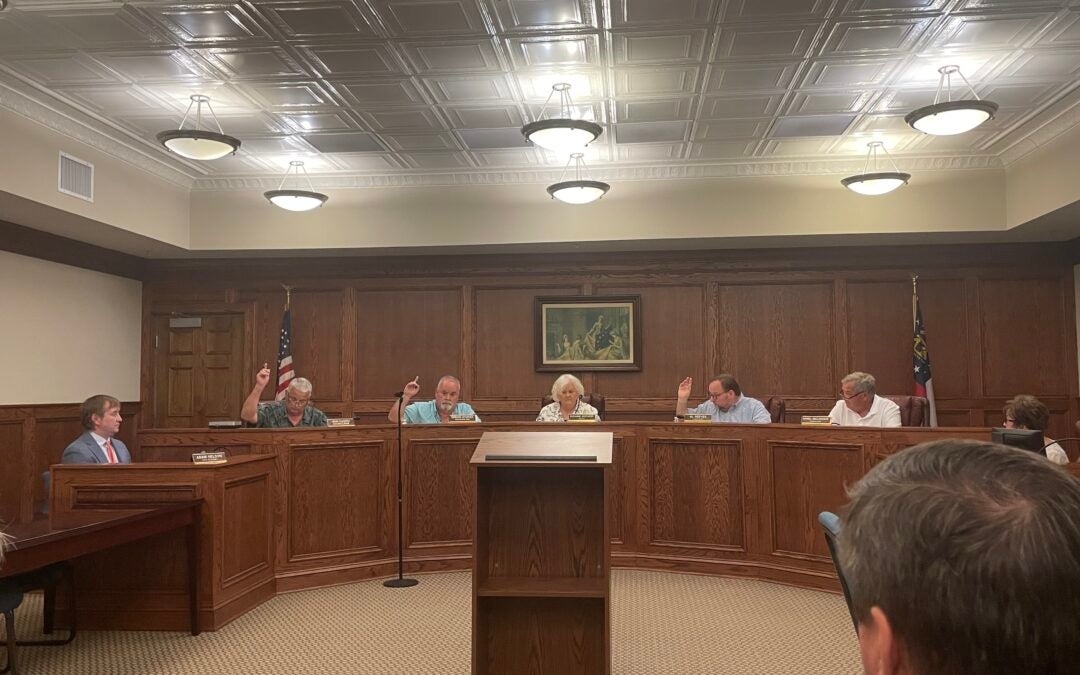In 2022, there were 21,156 homicides in the U.S. On Wednesday, Augusta University students undertook an exercise to show just what those numbers look like.
Students of professor Kim Davies’ Sociology of Murder Class gathered outside the entrance to Allgood Hall on the university’s Summerville campus, chalking hash marks into the sidewalk, a line for each life that figure represents.
“It’s something that I’ve learned over time helps make it real to students,” said Davies, who is the dean of the Pamplin College of Arts, Humanities and Social Sciences.
Earlier iterations of the project used objects, such as paper clips or pennies, to concretize the numbers. Davies began teaching the course in 2003, and wrote a textbook, “The Murder Book: Examining Homicide,” in 2007. She suggests the exercise in that book, and decided, she said, to make sure it worked.
Alongside helping learners understand the staggering, tragic implications of what can seem like data coldly written on a board, Davies said, the experiment can also encourage them to shed light on issues that matter to them.
“It also teaches them how to get attention for something you care about,” she said, noting that her own passion is raising awareness of, and working toward the prevention of, violence. “It’s teaching students, when they go out in the real world—which they’re always in, actually—and they want to bring attention to something they care about… something that the media finds colorful might get them the opportunity to talk to the media about what they care about.”
Lindy Funt, a senior, aims for a career in criminal justice, she said, to address injustices is the system, particularly how women and children are treated regarding certain crimes.
“If I could get an exact number of how many women and children that were let down by the justice system, then maybe something that this could work,” said Funt.
Kali Patel, a junior, found the numbers disheartening, as “every single mark is someone’s life.” Participating in the exercise has encouraged her own interest in advocating for mental health.
I think it’s very disheartening in a way, because it’s like, we’re just drawing it super quickly, but it’s like every single mark is like someone’s light.
“A lot of the people that were going through this, it was either a crime of passion, or it was someone they knew,” said Patel. “I feel that murderers, if in their young age, there were either teachers or mandated reporters around them, if they were more observant towards their signs and things, this could have been prevented.”
Davies asks her students, each year she teaches the class and conducts the exercise, if they think it’s worth it.
“They do think it makes the number real,” Davies said, highlighting that each line represents not only a murdered person, but the families of the victims, and in many cases the families of convicted perpetrators, who are also hurting.“We villainize the person who did it, for good reasons. But sometimes it’s complicated. Sometimes it’s even in the same family.”
The completed piece, thousands of marks, and some creative messages in between, spread throughout the walkway, often inspires passersby as well as the students who did the drawing.
“Sharing what we’re doing with other students makes a difference to them, to really have to explain to somebody else,” said Davies. “And when they see it for days on campus, it makes that impact too.”
Skyler Q. Andrews is a staff reporter covering business for The Augusta Press. Reach him at skyler@theaugustapress.com.










